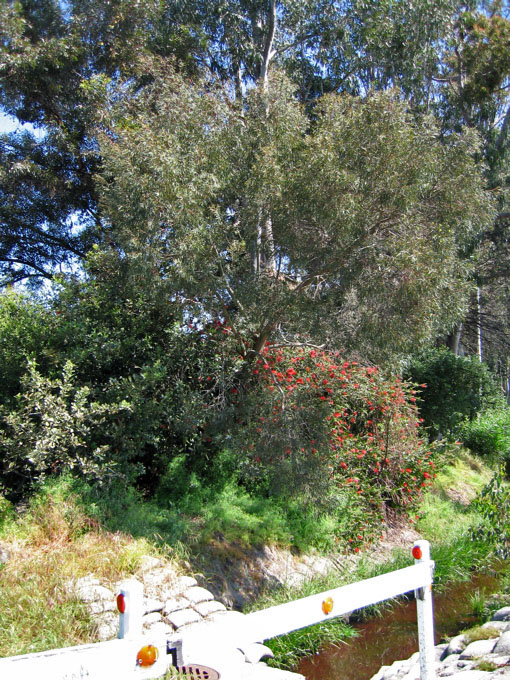Eucalyptus parvula
 small-leaved gum
small-leaved gum
Distinctive features of this tree are attractive, opposite, bluish juvenile leaves not much more than an inch long and ½ inch wide. This juvenile foliage is persistent, but the mature leaves, when they come, though longer (about 2½ inches), are even narrower. Consequently, this tree is recognizable instantly. The bark is smooth leaden-gray and peels in long strips.
An untended specimen at 3185 Alpine Road (site of the author’s radio astronomy research mapping temperatures of the Sun and studying extragalactic nebulae) developed enormously long and heavy branches descending to ground level, once referred to in a Stanford publication as resembling a wave rolling over the parking lot.
Another specimen is just east of the Recycling Center on Serra Street, southwest of the two Angophoras, leaning above the drain.
In its native habitat it endures frost every night in winter and is one of the eucalypts that doesn’t mind living in Britain, though this may be due to ability to survive lack of sunshine as much as to frost tolerance.
Illustrations: illus. 1 | illus. 2
Related material: Eucalyptus checklist
About this Entry: The main text of this entry is from the book Trees of Stanford and Environs, by Ronald Bracewell, published 2005. John Rawlings added the Serra St location ca. 2006; ID verified by Matt Ritter.






